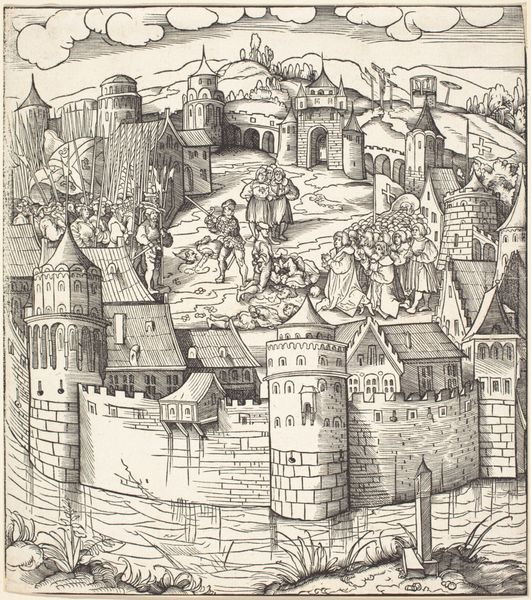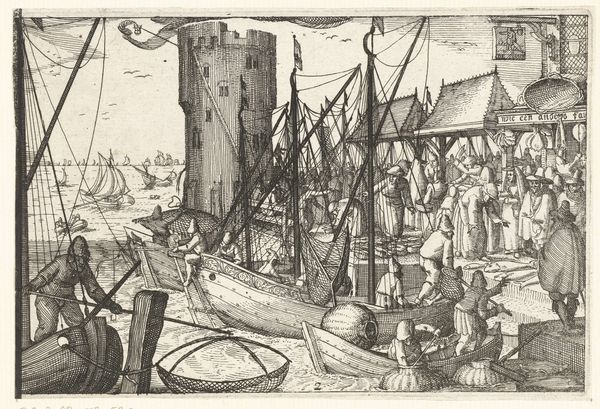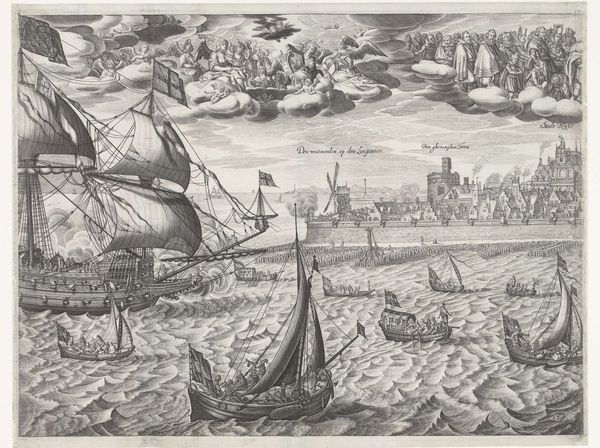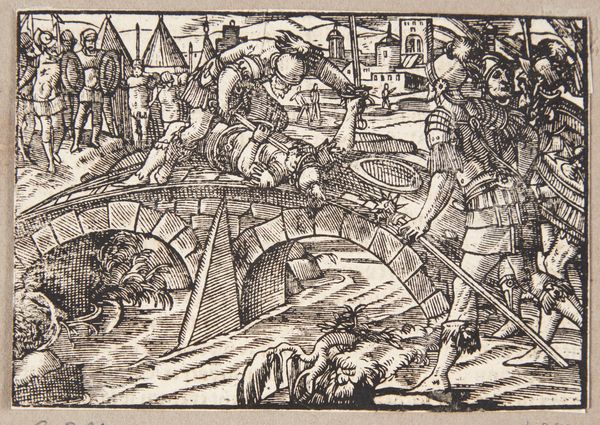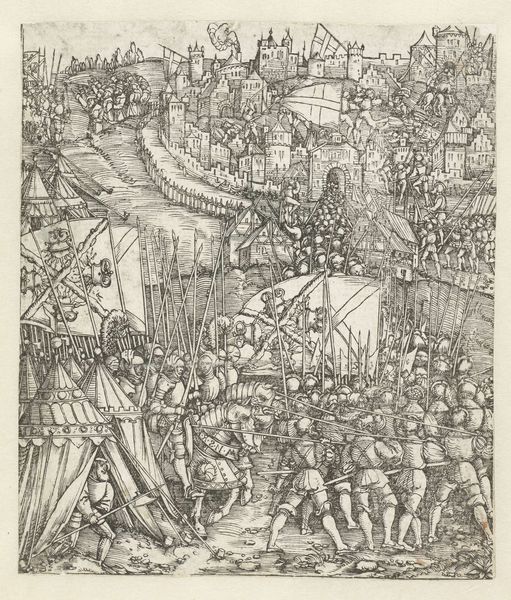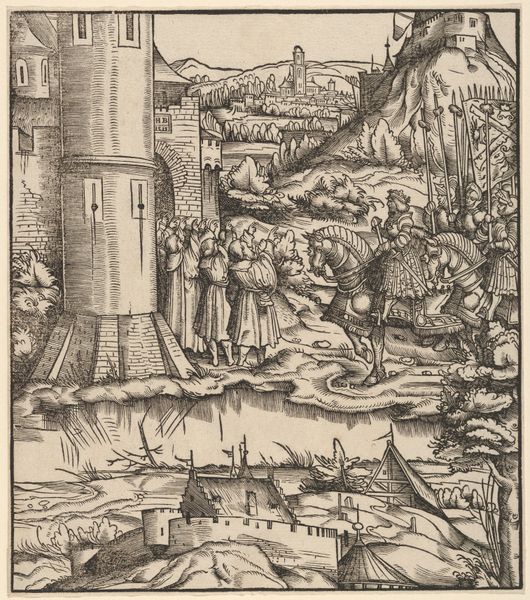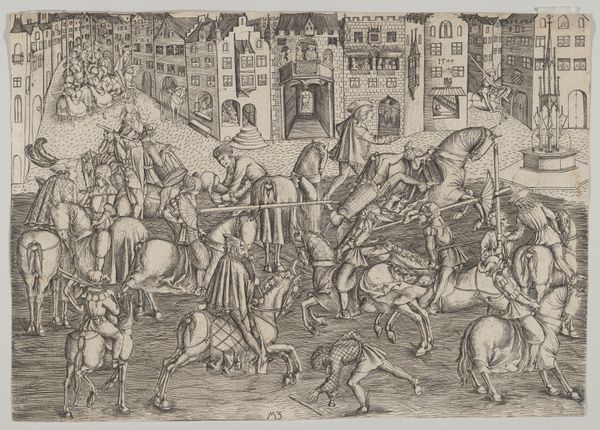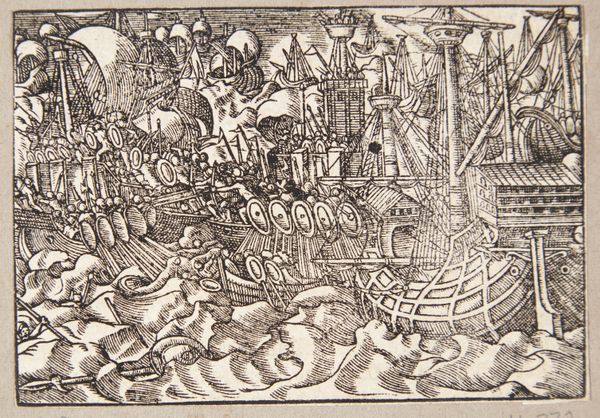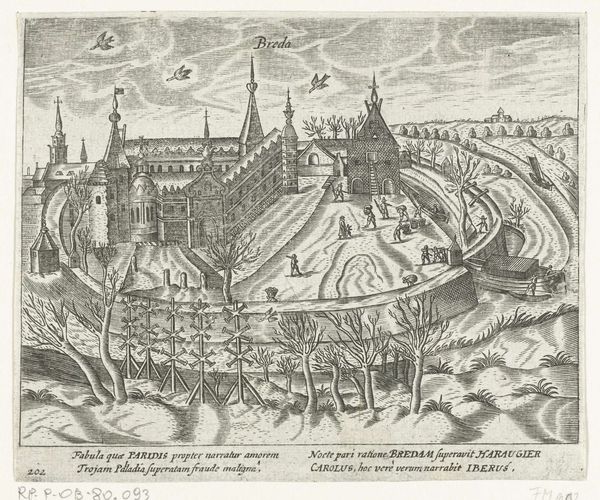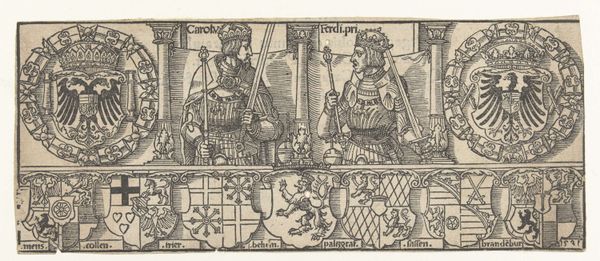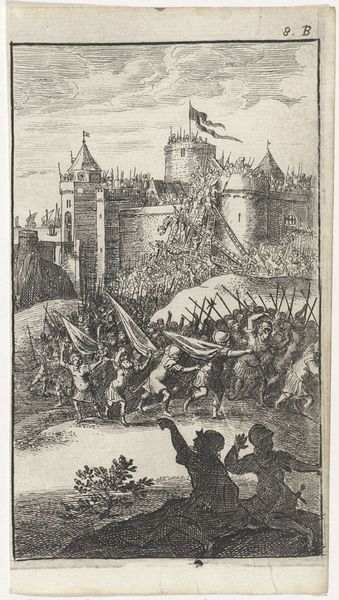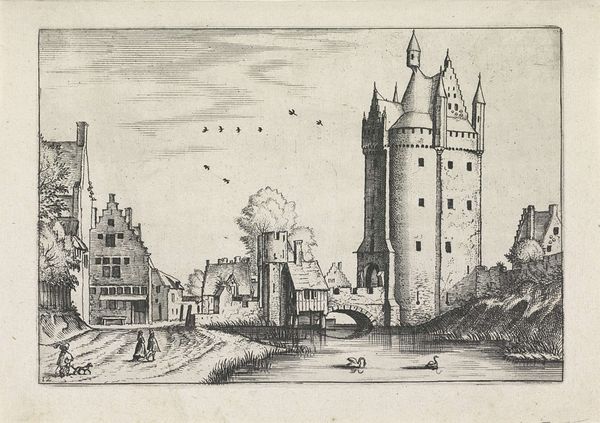
Division of the kingdom of Clotaire 1460
0:00
0:00
jeanfouquet
Bibliothèque nationale de France (BnF), Paris, France
tempera, painting, architecture
#
tempera
#
painting
#
history-painting
#
international-gothic
#
early-renaissance
#
architecture
Copyright: Public domain
Curator: The Division of the kingdom of Clotaire, painted around 1460 by Jean Fouquet, seemingly uses tempera paint. There's something so striking about how Fouquet rendered this historical moment using architecture as both stage and symbol. What immediately grabs you? Editor: I'm fascinated by the contrast between the imposing fortress and the serene swans in the water. It gives me this feeling of unease, as if something dramatic is about to happen beneath a veneer of tranquility. The detail in the architectural elements seems quite deliberate, but what does it signify? Curator: It's productive to think of this as Fouquet leveraging material depiction for specific ends. The architecture, so meticulously rendered, speaks to power, security, and, crucially, the tangible resources needed to build and maintain such structures. Fouquet isn’t just showing us a castle, but signaling a whole network of labour, extraction, and social organization. How does the presence of the army encampment factor into that for you? Editor: Ah, that shifts my perspective. The tents and armed figures suggest a kind of control over resources and land, and how armies ensure such ownership. Is it fair to view those blue flags with fleurs-de-lis atop the castle towers also as manufactured symbols of sovereign power? Curator: Exactly! Fouquet, through his deliberate use of paint and architectural details, isn't merely illustrating history but presenting an early-renaissance society acutely aware of its own constructed nature – a society defined by the production, control, and consumption of materials and symbolic systems. Seeing this challenges the classical notion of history painting, don't you agree? Editor: Absolutely! The rendering of the physical and symbolic objects highlights society's investments in material expression. This makes me see even the medium, the tempera paint itself, as another key element of meaning. Thanks, it’s all much clearer now! Curator: Likewise. Thinking about how materials and labor come together reframes how we think about these early paintings, prompting a different lens that focuses on how wealth, and politics, manifest.
Comments
No comments
Be the first to comment and join the conversation on the ultimate creative platform.
